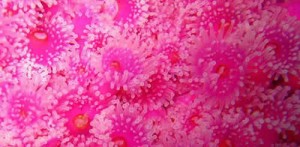
Source: DOC – Jewel anemones in the Kapiti Marine Reserve. Photo: Danica Stent
If Marine Reserves were people who could understand how difficult obtaining their status was, they would be incredibly stressed. Thanks to their natural beauty and ability to protect certain species, they can obtain their Marine Reserve title. This isn’t an easy process; it requires months, or years, of external assessment. After this point, they become an area of conservation that all boaters and visitors on foot must respect and protect as best they can.
Learning About the Different Rules at Each Marine Reserve
When you visit the Department of Conservation (DoC) website, you will see that each Marine Reserve comes with its own conservation rules. For example, if you visit TeAngiangi, you may meander among the rocks with children and turn them over gently to find crayfish. In contrast, many of The Antipodes must be left with no stone turned.
These rules may seem ridiculously varied, yet they have an important purpose. Since earning their Marine Reserve title, the Tonga Islands have seen a significant increase in marine life. This is because the DoC set out rules to protect the area, which visitors then pay close attention to. When you do the same, you contribute to the DoC’s efforts. The result is that more people can visit the reserves, and you stand a stronger chance of boating there again in the future. Even better, marine life there has a chance to flourish.
Treating Local Wildlife with Respect
Many forms of wildlife are beautiful to look at. Much like when you are exploring a zoo, you cannot simply enter and tamper with their habitats as you wish. Giving the species you find at New Zealand’s Marine Reserves the respect they’re due allows you to conserve them and enjoy them at the same time.
The rules you need to follow vary between reserves. However, they may include:
- Not taking pets to the reserves: When you take pets to certain Marine Reserves, they have the potential to disrupt local eco-systems. This means no taking your dog along, even if he or she usually goes everywhere with you.
- Returning rocks to their normal position: Just as you live in your house, some forms of marine life live under their rocks. Whether or not you can upturn these rocks depends on the reserve. However, if you are allowed to pick up rocks while exploring, always put them back.
- No taking wildlife away: This may seem obvious, but it is important to know that even the smallest of species make an important contribution to the local area. Don’t take anything away with you.
- No touching: Seals and penguins look pretty cute from a distance. The chances are they can get a little ferocious if you get too close.
Enjoying the Marine Reserves Respectfully
Fortunately, most people who visit the Marine Reserves will treat them with the respect they deserve. However, it is sometimes the case that you do not know that your behaviour isn’t going to benefit the local area.
As a rule, you should consider treating the reserve you visit with the same respect you’d afford to another person’s home. Generally, this means:
- No littering
- No camping without permission
- No setting fires, without permission
As always, checking out the specifics of these rules on the DoC website is recommended. Always educate yourself thoroughly on what the conservation rules for the area you are visiting are. With a little information, your visit can go a long way.
